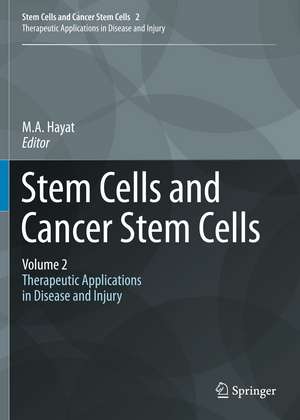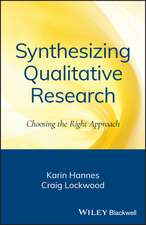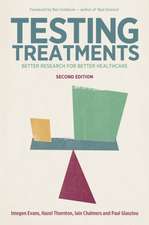Stem Cells and Cancer Stem Cells, Volume 2: Stem Cells and Cancer Stem Cells, Therapeutic Applications in Disease and Injury: Volume 2: Stem Cells and Cancer Stem Cells, cartea 2
Editat de M.A. Hayaten Limba Engleză Paperback – 27 noi 2013
| Toate formatele și edițiile | Preț | Express |
|---|---|---|
| Paperback (1) | 1323.37 lei 38-44 zile | |
| SPRINGER NETHERLANDS – 27 noi 2013 | 1323.37 lei 38-44 zile | |
| Hardback (1) | 1340.15 lei 38-44 zile | |
| SPRINGER NETHERLANDS – 16 oct 2011 | 1340.15 lei 38-44 zile |
Preț: 1323.37 lei
Preț vechi: 1393.01 lei
-5% Nou
Puncte Express: 1985
Preț estimativ în valută:
253.23€ • 261.25$ • 211.32£
253.23€ • 261.25$ • 211.32£
Carte tipărită la comandă
Livrare economică 22-28 martie
Preluare comenzi: 021 569.72.76
Specificații
ISBN-13: 9789400738287
ISBN-10: 9400738285
Pagini: 408
Ilustrații: XXIV, 384 p.
Dimensiuni: 193 x 260 x 21 mm
Ediția:2012
Editura: SPRINGER NETHERLANDS
Colecția Springer
Seria Stem Cells and Cancer Stem Cells
Locul publicării:Dordrecht, Netherlands
ISBN-10: 9400738285
Pagini: 408
Ilustrații: XXIV, 384 p.
Dimensiuni: 193 x 260 x 21 mm
Ediția:2012
Editura: SPRINGER NETHERLANDS
Colecția Springer
Seria Stem Cells and Cancer Stem Cells
Locul publicării:Dordrecht, Netherlands
Public țintă
ResearchCuprins
Introduction.-1. Isolation of bone marrow stromal cells from bone marrow by using a filtering device (method).- 2. Hematopoietic stem cell frequency estimate: statistical approach to model limiting dilution competitive repopulation assays.3. Characteristics of cord blood stem cells: role of substance p (sp) and calcitonin gene-related peptide (cgrp).- 4. A new concept of stem cell disorders, and the rationale for transplantation of normal stem cells.- 5. Differentiation of human embryonic stem cells into functional hepatocyte-like cells (method).- 6. Stem cell mobilization: an overview.- 7. Status and impact of research on human pluripotent stem cells: cell lines and their use in published research.- 8. Gliosarcoma stem cells: glial and mesenchymal differentiation.- 9. Generation of induced pluripotent stem cells from mesenchymal stromal cells derived from human third molars (method).- 10. Self-renewal and differentiation of intestinal stem cells: role of hedgehog pathway.- 11. Hematopoietic stem cell repopulation after transplantation: role of vinculin.- 12. Guoliang meng and derrick rancourt static and suspension culture of human embryonic stem cells.- 13. Generation of marmoset induced pluripotent stem cells using six transcription factors (method).- 14 Myc as a multifaceted regulator of pluripotency and reprogramming. CANCER STEM CELLS.- 15. Veronica catalano, antonina benfante, giorgio stassi, and matilde todaro human thyroid cancer stem cells.- 16. Tumor stem cells: cd133 gene rugulation and tumor stemness.- 17. Cripto-1: a common embryonic stem cell and cancer cell marker. DISEASES.- 18. Treatment of heart disease: use of transdifferentiation methodology for reprogramming adult stem cells.- 19. Rat mesenchymal cell cd44 surface markers: role in cardiomyogenic differentiation.- 20. Stroke therapy using menstrual blood stem-like cells: method.- 21. Spontaneous cerebral stroke in rats: differentation of new neurons from neural stemcells.- 22. Neurogenesis in the cerberal cortex after stroke.- 23. Ex vivo expanded hematopoietic stem cells for ischemia.- 24. Breast cancer risk: role of somatic breast stem cells.- 25. Replacement therapy in neurodegenerative disease using induced pluripotent stem cells.- 26. Treatment of graft-versous-host disease using allogeneic mesenchymal stem cells.- 27. Adult neurogenesis in etiology and pathogenesis of alzheimar’s disease. TISSUE REPAIR (REGENERATION).- 28. Generating human cardiac muscle cells from adipose-derived stem cells.- 29. Mesenchymal stem cells and mesenchymal-derived endothelial cells: repair of bone defects.- 30. Omentum in the repair of injured tissue: evidence for omental stem cells.- 31. Human embryonic stem cells transplanted into mouse retina induces neural differentiation.- 32. Stem cells to repair retina: from basic to applied biology.- 33. Heterogeneous responses of human bone marow stromal cells (multipotent mesenchymal stromal cells) to osteogenic induction.- 34. Adipose-derived stem cells and platelet-rich plasma: implications for regenerative medicine.- 35. Skeletal muscle-derived stem cells: role in cellular cardiomyoplasty.- 36. Cardiac regenerative medicine without stem cell transplantation.- 37. Allogeneic transplantation of fetal membrane-derived mesenchymal stem cells: therapy for acute myocarditis.- 38. Patients with cancer or hematopoietic stem cell transplant: infection with 2009 h1n1 influenza. Index.
Recenzii
From the reviews:
“Stem cells and cancer stem cells are 2 distinct, evolving, and promising areas of research. … This book, the second in a planned series of 7 volumes, covers select new research in both fields. This book highlights selected research from renowned scientists around the world. … Stem Cells and Cancer Stem Cells would be most helpful for basic science researchers studying stem cells and for cancer stem cell preclinical research.” (Paulette Mehta, Journal of the American Medical Association, Vol. 307 (10), March, 2012)
“This well-written book not only describes current laboratory techniques for studying stem cells, but also summarizes important aspects of the clinical potential of stem cell-based therapy in cancerous and noncancerous human diseases. … a much-needed update of the progress made in major areas of stem cell research applied to clinical medicine. … written for specialists and experts in different areas of clinical medicine, it is an excellent reference and guide for students and basic researchers with a particular interest in this promising and expanding field.” (Luigi Strizzi, Doody’s Review Service, March, 2012)
“Stem cells and cancer stem cells are 2 distinct, evolving, and promising areas of research. … This book, the second in a planned series of 7 volumes, covers select new research in both fields. This book highlights selected research from renowned scientists around the world. … Stem Cells and Cancer Stem Cells would be most helpful for basic science researchers studying stem cells and for cancer stem cell preclinical research.” (Paulette Mehta, Journal of the American Medical Association, Vol. 307 (10), March, 2012)
“This well-written book not only describes current laboratory techniques for studying stem cells, but also summarizes important aspects of the clinical potential of stem cell-based therapy in cancerous and noncancerous human diseases. … a much-needed update of the progress made in major areas of stem cell research applied to clinical medicine. … written for specialists and experts in different areas of clinical medicine, it is an excellent reference and guide for students and basic researchers with a particular interest in this promising and expanding field.” (Luigi Strizzi, Doody’s Review Service, March, 2012)
Textul de pe ultima copertă
As in volume 1 of this series, this volume presents information on stem cells and cancer stem cells; Therapeutic Applications in disease and tissue/organ injury. Methodologies of regenerative medicine and tissue engineering are major components of this volume. Specific stem cells discussed are: human embryonic stem cells, hematopoietic stem cells, cord blood stem cells, human pluripotent stem cells, gliosarcoma stem cells, induced pluripotent stem cells, intestinal stem cells, human thyroid cancer stem cells, tumor stem cells, menstrual stem-like cells, neural stem cells, breast cancer stem cells, allogeneic mesenchymal stem cells, fetal membrane-derived mesemchynmal stem cells, and omental stem cells. The method for isolating bone marrow stromal cells is explained. Method for generating marmoset-induced pluripotent stem cells, using transcription factors, is also explained. Use of stem cell lines in therapeutic applications is discussed. Programming of stem cells is described. Methods for transplantation of stem cells are presented. Use of various types of stem cells for conditions such as stroke, ischemia, heart diseases, Alzhemier’s disease, and neurogenerative diseases in general, is explained. For example, generation of human cardiac muscle cells from adipose-derived stem cells is included. Another example is repairing bone defects using mesenchymal stem cells and mesenchymal-derived endothelial cells. Differentiation of new neurons from neural stem cells is described. Method for repairing retina condition using human embryonic stem cells is explained; these cells can induce neural differentiation. Treatment of graft-versus-host disease resulting from hematopoietic stem cell transplantation is elaborated.
Caracteristici
Therapeutic use of stem cells and cancer stem cells Repair of damaged tissues Cardiomyoplasty and osteogenic induction Use of stem cells for developing in vitro disease modeling Diagnosis and therapy of diseases

























